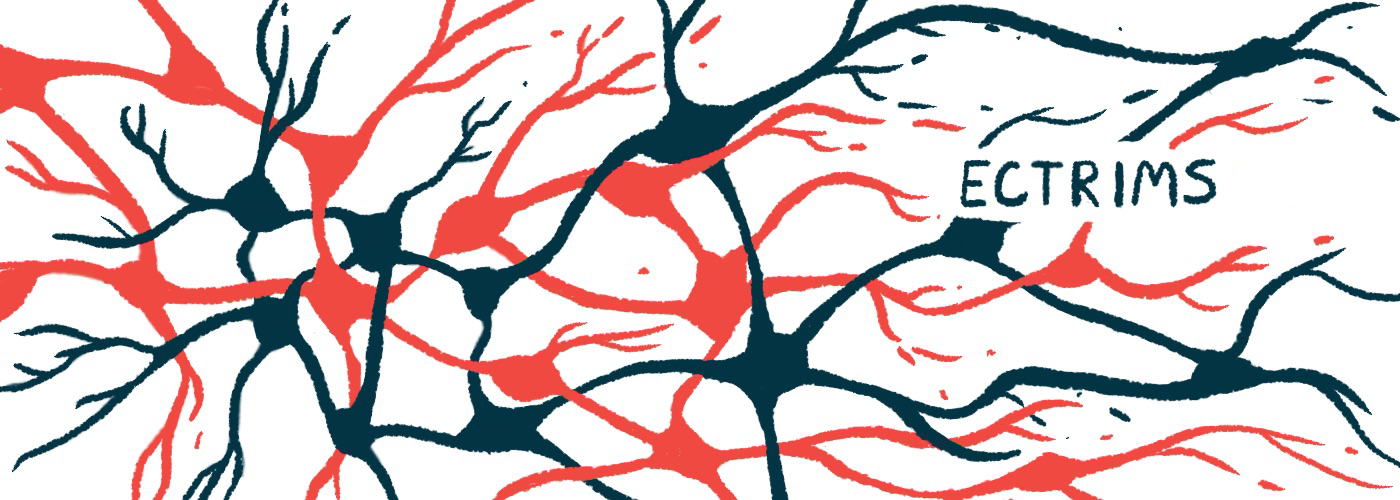ECTRIMS 2023: Early, nonspecific symptoms may precede 1st attack
Understanding disease progression can help with early diagnosis, treatment

Nearly 1 in 5 people with neuromyelitis optica spectrum disorder (NMOSD) experience early neurological symptoms prior to their first established NMOSD attack, new research suggests.
These symptoms could represent an NMOSD prodrome, a disease stage where nonspecific symptoms emerge before the classic manifestations of the disease.
A better understanding of a disease’s prodrome is believed to help facilitate early diagnosis and treatment.
The findings were shared by Sydney Lee, MD, of the University of Toronto, in a poster presentation at this year’s joint meeting of the European Committee for Treatment and Research in Multiple Sclerosis (ECTRIMS) and the Americas Committee for Treatment and Research in Multiple Sclerosis (ACTRIMS), being held this week in Milan and online.
“This is the first study to investigate a possible prodromal phase of NMOSD,” the researchers wrote in the poster, titled “Is there a prodrome to NMOSD? An investigation of neurologic symptoms preceding the first NMOSD attack.”
Prodromal phase possible in some neurological diseases
NMOSD is an autoimmune disease in which healthy parts of the central nervous system (CNS; the brain and spinal cord) are mistakenly attacked by the body’s own immune system. This commonly leads to inflammation of the spinal cord (transverse myelitis) and the optic nerve (optic neuritis), which relays signals between the eye and the brain.
Accumulating evidence indicates that there is a prodromal phase to some neurological diseases prior to the onset of typical symptoms. Particularly, in multiple sclerosis (MS) — a disease closely related to NMOSD — symptoms such as anxiety, depression, pain, or sleep problems may be apparent years before the first disease attack.
There is some evidence that self-reactive antibodies against the aquaporin-4 (AQP4) protein, the most common target of NMOSD-causing antibodies, may be present up to 10 years or more before a first attack.
However, it has not been established whether an NMOSD prodrome exists.
“There are no published studies to date investigating a possible prodromal phase of NMOSD,” researchers noted in the poster.
Medical records of 102 NMOSD patients analyzed
As such, Lee and colleagues aimed to assess whether NMOSD patients positive for anti-AQP4 antibodies experience prodromal neurological symptoms preceding their first established NMOSD attack.
The scientists retrospectively analyzed medical records from 102 NMOSD patients (86 females and 16 males) seen at three specialized Canadian centers. All were enrolled in the Canadian NMOSD and other atypical demyelinating disease cohort study (CANTOPICS) that began recruiting in January 2021.
About one-third of the patients were Asian, and nearly another third were African or Caribbean. Less than one-quarter were European or white. Patients’ had experienced their first attack at a median age of 43 years (range, 5-85 years). This first attack was most commonly transverse myelitis (53.9%), followed by optic neuritis (27.5%).
The team then looked for neurological symptoms occurring at least 30 days prior to the first recorded attack and found that 18 patients (17.4%) had experienced such prodromal symptoms.
Patients with prodromal symptoms (94.4% female) had a median age of 48.4 years (range, 25-83 years) at the time of the first NMOSD flare, whereas among the 84 people (82.1% female) who did not experience such symptoms, the median age was 42.5 (5-85 years).
A greater proportion of patients in the prodromal group was of African or Caribbean ethnicity (55.6% vs. 25%), while there was a lower proportion of Asian patients in this group (22.2% vs. 40.5%). The rates of transverse myelitis and optic neuritis at first attack were comparable between the groups.
Prodromal neurological symptoms arose a median of 16 months (range, 1.5 months to 20 years) before the first NMOSD attack. In 10 of the 18 patients (55.6%), more than one neurological symptom was experienced.
Numbness, nerve pain, visual disturbances most common symptoms
The most common prodromal symptom was numbness (nine patients), followed by nerve pain (five patients), and visual disturbances (four patients).
Muscle spasms, incoordination, severe headache, and electric shock-like pain radiating from the neck (Lhermitte sign) were each experienced by two patients, whereas weakness, psychosis, seizure, or tremors were each reported in one patient.
A total of 11 patients (61.1%) experienced constant prodromal symptoms, while intermittent symptoms were reported in nine (50%).
Symptoms lasted a median of four weeks, with complete resolution prior to the first NMOSD attack in most patients (72.2%). The remaining 27.8% experienced persistent symptoms up until the time of the first attack.
A total of 17 imaging tests — including head CTs, MRI of the brain and/or spine — were conducted at the time of prodromal symptoms.
Imaging abnormalities that were not considered classic NMOSD signs were detected in at least one of the patients undergoing a specific scan. More than half (57.1%) of the seven patients who underwent brain MRI showed such abnormalities.
Altogether, “some patients with NMOSD may experience prodromal neurologic symptoms prior to their first NMOSD attack,” the researchers wrote in the abstract. “A prodromal phase may provide clues to facilitate earlier diagnosis and understanding of the [disease mechanisms] of NMOSD.”






